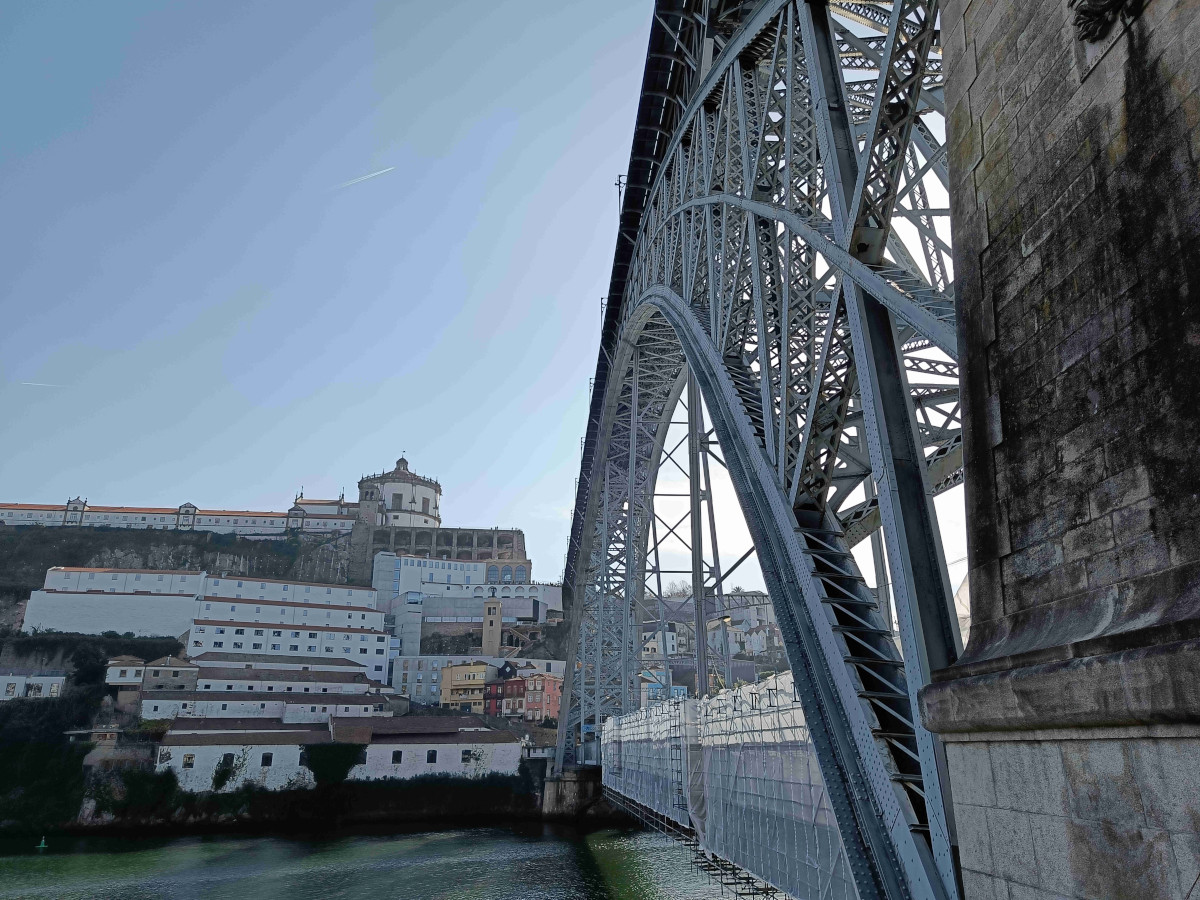D. Luis I Bridge
Dom Luís I Bridge is a railway, road and pedestrian double-deck metal arch bridge across the Douro River in Portugal connecting the cities of Porto and Vila Nova di Gaia.

Project Details
- Location : D. Luis I Bridge
- Date of completion : 1886
- Projected by : Gustave Eiffel
- Apartment Distance : 600 meters
Overview
In 1879, Gustave Eiffel presented a project to construct a new bridge over the Douro, with a high single deck in order to facilitate ship navigation. This project was rejected due to dramatic growth of the urban population, which required a re-thinking of the limits of a single-deck platform.
A competition was initiated in November 1880, in order to construct a double-deck metal bridge, which included projects by Compagnie de Fives-Lille, Cail & C., Schneider & Co., Gustave Eiffel, Lecoq & Co., Société de Braine-le-Comte, Société des Batignolles (which submitted two ideas), Andrew Handyside & Co., Société de Construction de Willebroek (also two projects) and John Dixon. It was in January of the following year that deliberations by the committee supported the project of Société de Willebroek, a design that cost 369 000$000[clarification needed] réis and provided better carrying capacity. On 21 November 1881, the public work was awarded to the Belgian Société de Willebreok, from Brussels, for 402 contos. It was to be administrated by Théophile Seyrig, a disciple of Gustave Eiffel and author of the project. Seyrig had worked on the D. Maria bridge with Eiffel, hence the resemblance of his new bridge to the D. Maria bridge. Construction began on the Ponte Luís I alongside the towers of an earlier railway suspension bridge, the Ponte Pênsil, which was disassembled.
By 26 May 1886, the first weight experiments began, with the transport of a 2,000 kilograms (4,400 lb) per metre. On 30 October construction of the main arch and upper deck were concluded, resulting in its inauguration the very next day. On 1 November, a toll system began to operate under the administration of the winning company, that was equal to 4 reís per person. The following year the lower deck was inaugurated, completing the project. During its ceremonies, the bridge was blessed by Bishop D. Américo.
By the turn of the century (1908) electric carriages were installed in the city centre, extending to the bridge.
On 1 January 1944, the toll system was extinguished and the bridge began to function as free infrastructure of the municipal authority of Porto.[2] Originally and for more than a century, the bridge carried road traffic on both decks. Along with other vehicles, electric trams crossed the upper deck from 1908 until May 1959, and trolleybuses crossed both decks from May 1959 until 1993. By 1954, public works were initiated on the bridge under the direction of engineer Edgar Cardoso, who extended the decks and removed the electrification of the deck.
In 1982, the bridge was designated a cultural heritage Imóvel de Interesse Público (Property of Public Interest) by national agency IGESPAR, the Portuguese Institute for the Management of Architectural and Archaeological Heritage. Luís I Bridge, September 2019
On 27 June 2003, the upper deck was closed to motor traffic in order to adapt the structure for the metro system. Infante Dom Henrique Bridge, 500 m (1,600 ft) upriver, was completed three months earlier to provide an alternative vehicle connection between Porto and Vila Nova de Gaia. The new “D Line” was inaugurated on 18 September 2005, and opened to the metro trams and pedestrian traffic. With more traffic and demographic growth, in March 2006, a project to enlarge the lower deck was elaborated by architect Virgínio Moutinho and engineers António and José António Campos e Matos. However, the municipal council of Porto asked the Direção-Geral do Património Cultural (Directorate-General for Cultural Patrimony) to avoid a decision on the project, as it was being rethought.